#Taishakuten
Text

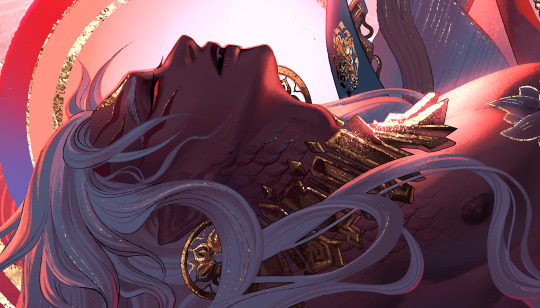



I've committed the first sin
I'm the unmatched destroyer
Run before I descend into madness
illust I did for twitter @inmyheartbook
support me on pixiv fanbox
melontoyo.fanbox.cc
#artists on tumblr#onmyoji#taishakuten#asura#asutai#onmyoji fanart#melontoyo's art#finally this is free#pls give this some love 🥺💖#now back to work~
2K notes
·
View notes
Text

Hey everyone! I’m still alive and draw occasionally. I hope you’ve all been doing well. 💕
#ipart#taishakuten#onmyoji#yuji itadori#jujutsu kaisen#shorter wong#banana fish#alhaitham#genshin impact#shen qingqiu#scum villian self saving system#svsss#cheng xiaoshi#link click
254 notes
·
View notes
Text
Well, I expected Seishirou to win, but not by that much of a margin, and Fei Wang in second place was also a surprise considering I’ve never heard anyone speak of him positively.
#clamp#tokyo babylon#x1999#x/1999#xxxholic#tsubasa reservoir chronicle#trc#tsubasa#tsubasa reservoir chronicles#magic knight rayearth#mahou kishi rayearth#chobits#gate 7#rg veda#clampism is a mood#clamp学園探偵団#clamp manga#clamplove#sakurazuka seishiro#monou fuuma#taishakuten#kendappa-ou#zagato#chobits freya#fei wang reed#satsuki yatouji#yuto kigai#kanoe#iemitsu#best CLAMP villain poll
131 notes
·
View notes
Text
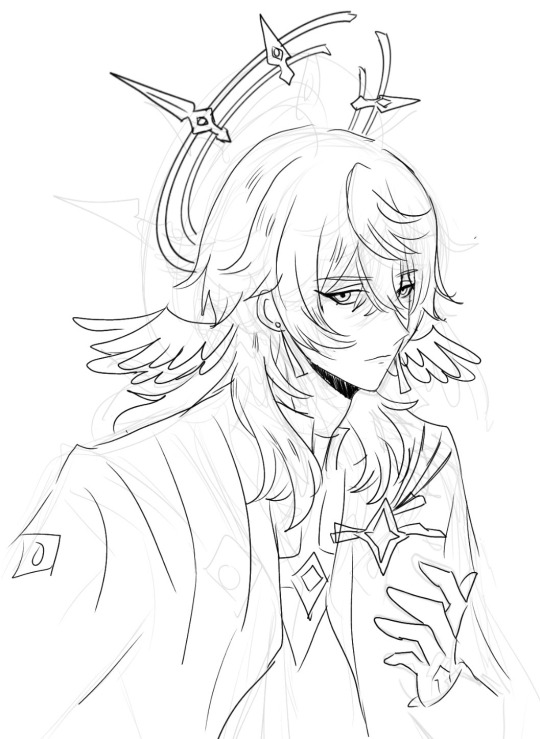
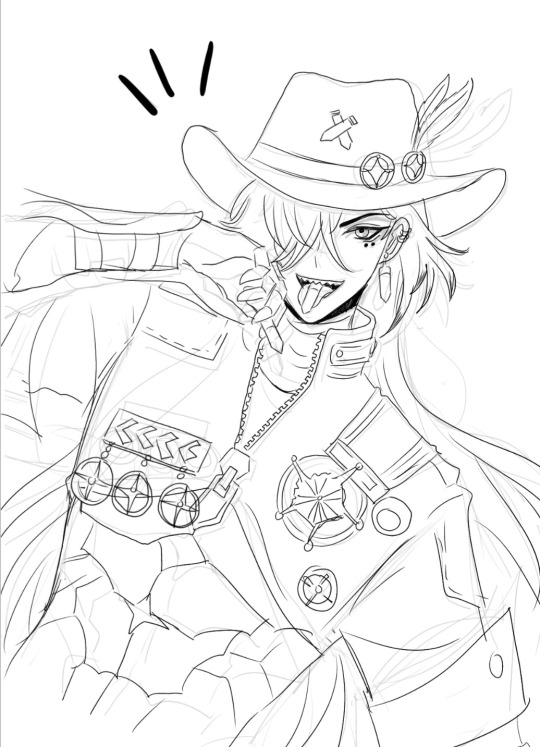

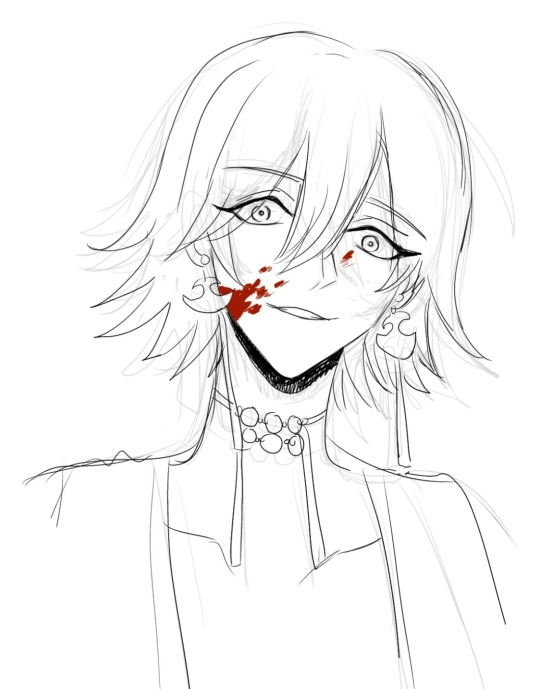
All the requests sketch. Coincidentally they are all mad guys lol. (Is that what y'all think of me eh?).
#leona kingscholar#taishakuten#sunday hsr#boothill hsr#twisted wonderland#twst#honkai star rail#hsr#onmyoji
100 notes
·
View notes
Text

my piece for the AsuTai zine @ inmyheartBook!
201 notes
·
View notes
Text










#back with my bs#clamp#tsubasa chronicle#xxxholic#rg veda#card captor sakura#x/1999#douwata#kurofai#fuukam#touyuki#yuuko ichihara#kendappa#taishakuten#seishirou sakurazuka
857 notes
·
View notes
Text
When i tell you i cried (for asura-)
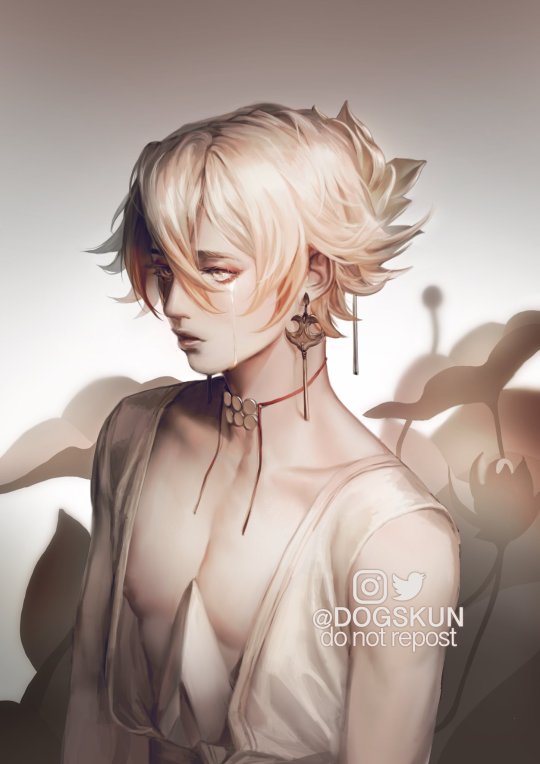
426 notes
·
View notes
Text
The fabrication of a storm god: Susanoo, Taishakuten (Indra) and their histories

When I found this ask in my inbox recently, I initially admittedly wanted to only give a short, dismissive response. After all, the similarity between these two is completely superficial. And, truth to be told, it’s more a vague similarity between how they are presented as “storm gods” by questionable online sources than between their actual roles. However, I quickly realized that would not accomplish much. The best way to counter misconceptions is to show reality is more interesting - and in the case of complex figures with long histories, this requires time and effort.
The response, like the recent Tamamo no Mae one, kept growing as a result, and evolved into a fully blown unplanned post. Under the cut, you will find a brief examination of the origin of the erroneous notion that Susanoo was ever understood a “storm god”, as well as a summary of his character character, the main deities linked to him in the Japanese “middle ages”, and finally his fate after the Meiji restoration. In the second half, I deal with the Japanese reception of Indra. While not actually related to Susanoo, he is nonetheless a complex deity worth exploring, even though it feels like he’s not particularly appreciated by hobbyists and his central role in medieval cosmology hardly gets acknowledged.
Victorian confabulations and Meiji mirages: the fabrication of a storm god
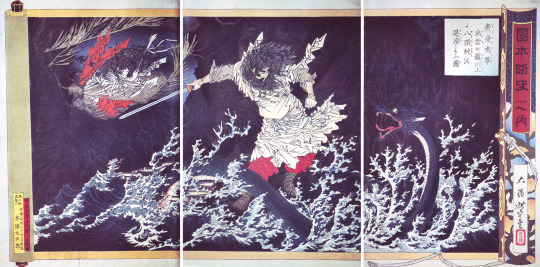
Susanoo vanquishing Yamata no Orochi, as depicted by Yoshitoshi Tsukioka (wikimedia commons)
Contrary to what you might have seen in numerous online sources of dubious quality, Susanoo is not a “storm god” (let alone a “thunder god” more specifically). Nothing to that effect shows up in standard points of reference like Encyclopedia of Shinto, and even Wikipedia despite arbitrarily putting him in the weather god category only musters a single 2000 paper which I’ve never seen cited in subsequent Susanoo research as “evidence” of a weather connection.
The most recent in depth treatments of Susanoo in English are a section of Bernard Faure’s monograph Rage and Ravage and David Weiss’ The God Susanoo and Korea in Japan’s Cultural Memory: Ancient Myths and Modern Empire. The former at no point makes any claims pertaining to the weather while discussing him. The latter notes the view that Susanoo was a “storm god” enjoyed some popularity in the late nineteenth century because of the influence of the now long abandoned school of “nature mythology”, in which deities are only ever representations of natural phenomena. This theory was originally formulated by Edward Burnett Tylor, who basically admitted no actual Japanese sources ever present him as a “storm god”, but that this character is nonetheless evident in his vibes (obviously not how he phrased it, but his study deserves no more dignified summary).
Tylor’s nonsense was subsequently taken up by a certain Edmund Buckle, who randomly connected his forerunner’s oc with Indra because I guess all weather gods are basically interchangeable (there’s an interesting point to be made about how they’re the one group of male deities who are often treated in poor quality scholarship the way goddesses usually are). By 1899, the theory reached Japan, where it caused a prolonged academic debacle. However, it seems supporters of this view, much like in the west, were the followers of the long since abandoned notion of “nature mythology”. Among the theory’s opponents were researchers such as Masaharu Anesaki. As far as I can tell, it’s essentially irrelevant today.
The oldest available information about Susanoo’s actual character comes from the Kojiki and the Nihon Shoki. I don’t think that needs to be discussed here in detail. Even though I often overestimate other people’s familiarity with mythology I think it’s fair to say everyone with just a passing interest in Japan knows at least the basics of the myths about his conflict with his sister Amaterasu, his banishment, and subsequent victory over the serpent Yamata no Orochi. It will suffice to say the oldest recorded mythical image of him is that of an ambivalent deity, a heroic monster slayer on one hand, a transgressor and exile on the other. This polarity remains a core part of him for the rest of his history.
The other early sources dealing with Susanoo are various fudoki, regional records. They indicate that in the eighth century he already was connected with diseases. Later on in the Heian period, he also came to be associated with purification. Or to be more precise - he came to be viewed as the archetypal target of purification, in a way. His misdeeds from classical mythology became examples of deeds requiring such ceremonies, performed variously by courtly ritual specialists like the Nakatomi clan, Buddhist clergy, or onmyōdō masters. He also functioned as a jinushi, a “landholder deity” of often ambivalent character tied to a specific location, and an araburugami, a “raging god” defined by causing havoc out of hubris (as opposed to malice).
Gozu Tennō and others: the network of medieval Susanoo
Susanoo’s character developed through the Japanese “middle ages” in no small part through associations with other deities, typically caused by his incorporation into Buddhism.

A composite Susanoo-Gozu Tennō, as depicted by Sadahide Utagawa (Östasiatiska Museet, Stockholm)
The single most important figure he came to be linked with was by far Gozu Tennō, the “Bull-Headed Heavenly King”. While religious and literary texts present him as a deity from India, the guardian of the Jetavana monastery, and he was even furnished with an artificial Sanskrit name, Gomagriva Devaraja, his origin is actually uncertain. It’s possible he was inspired by a misreading of a passage from the travelog of the Chinese monk Faxian (c. 337-442). He visited Jetavana in the early fifth century, and reported that there was a statue of a bull next to the monastery’s door, before moving on to describing the supposed first image of the Buddha, which according to him was made from legendary “ox-head sandalwood” and impervious to fire. Confusion between these two passages might have led to the creation of an ox-headed deity. Other proposals are present in scholarship too, but ultimately the matter remains unclear.
What is evident is that Susanoo and Gozu Tennō shared many similarities: the latter also was an archetypal “raging deity”, and he too was linked with pestilence. An argument can be made that he was the disease spirit par excellence in medieval Japan, in fact. When properly worshiped, he was supposed to protect the faithful from illnesses, as expected from a deity of this variety. They also shared an association with foreign lands: Gozu Tennō primarily with India, but also with China and Korea, while Susanoo just with Korea, due to a Nihon Shoki episode where he travels to the kingdom of Silla. Yet another point of connection is that both were simultaneously recognized as manifestations of Yakushi (the “medicine Buddha”). Therefore, it comes as no surprise that at the Gion shrine in Kyoto, and in many other locations across Japan, the two were identified fully.
However, the link was at times conceptualized differently than as interchangeability between the two. For instance, Kaneyoshi Ichijō’s treatise Kuji Kongen (公事根源; “Roots of Court Administration and Ceremonies”) Gozu Tennō is merely an “acolyte” (warawabe, 童部) of Susanoo. Granted, this author eventually came to view them as identical himself, which shows how fluid medieval theology could be.
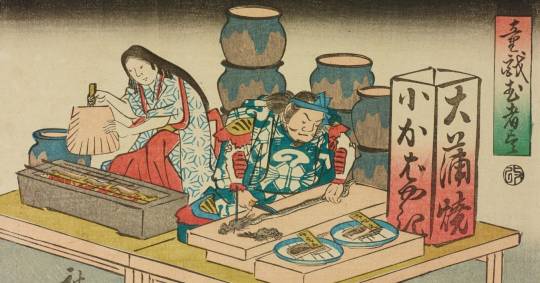
A humorous depiction of Susanoo and Kushinadahime serving pieces of Yamata no Orochi prepared like grilled eel (Ōta Memorial Museum of Art; reproduced here for educational purposes only)
The identification between Susanoo and Gozu Tennō also extended to their wives, respectively Kushinadahime and Harisaijo (波梨采女), as evident for example in the Shaku Nihongi. The latter was regarded as a daughter of the dragon king Sāgara. Things are made slightly awkward by the Nihon Shoki Sanso, where she is a manifestation of Yamata no Orochi (one of the multiple cases of putting a positive spin on the snake). Susanoo in the guise of Gozu Tennō thus effectively marries his nemesis.
The marriage itself is a subject of a number of myths. According to Hoki Naiden (簠簋内伝), an onmyōdō manual, the “heavenly emperor” (Taishakuten, one would presume, based on information I’ll discuss later) de facto played the role of a matchmaker between Harisaijo and Gozu Tennō. When the latter was lamenting that due to his monstrous, yaksha-like form - he had the head of a bull - he will never find love, a bird sent by the celestial ruler informed him that it would be appropriate for him and Sāgara’s daughter to get married. This suggestion then evidently works out just fine, and the couple subsequently have eight children, the Hachiōji (八王子, “eight princes”) over the course of thirty seven years.
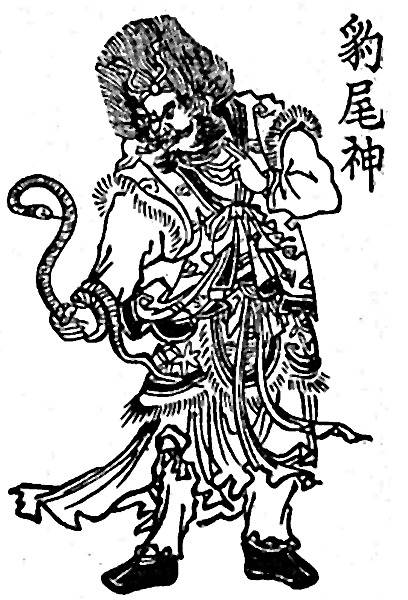
Hyōbi (wikimedia commons)
There are multiple slightly divergent traditions about the identities of the children. The most notable variable is that a goddess named Jadokkeshin (蛇毒気神; also read Dadokuke no kami; “deity of poisonous snake breath”) sometimes appears among them, sometimes is treated as an independent deity serving Gozu Tennō, and sometimes takes the role of his spouse (in at least one case with Harisaijo quite literally relegated to the role of his ex). She is also identified with the astral deity Hyōbi (豹尾, “leopard tail”) and by extension with Ketu.
Another figure who was closely linked with Susanoo in the middle ages was Matarajin. This tradition was associated with Gakuen-ji. In a local legend, Susanoo started to be called Matarajin after being buried underneath it. I won’t dwell much on Matarajin here since I already wrote a lot about him, and will write even more in the near future, so it will suffice to say the two share a connection to diseases. In Matarajin’s case it is the most pronounced in the “ox festival” still held in modern times at Kōryū-ji.

Shinra Myōjin (wikimedia commons)
Connections between Susanoo and Matarajin’s fellow Tendai old man disease-related deities Sekizan Myōjin and Shinra Myōjin are documented too. Bernard Faure argues that in fact it was Shinra Myōjin who first developed such an association, and it was only transferred to Matarajin as well because of the numerous analogies between them.
A distinct tradition regarding Susanoo developed in the theology of Ise (“Ryōbu shintō”), which as expected was Amaterasu-centric (but also Dainichi-centric!). He came to be linked with Mara and Devadatta as a representation of “fundamental ignorance”, with the conflict between him and Amaterasy gaining an additional Buddhist dimension. At the same time, in the noh play Dairokuten (第六天), which deals with Jōkei’s pilgrimage to Ise, Susanoo appears to protect this monk from Mara. Evidently, in this context Susanoo and Amaterasu are hardly opposed to each other, seeing as the former de facto intervenes on behalf of the latter.
While the notion of rivalry between the siblings obviously did not vanish in the middle ages, and in fact new myths about it started to circulate (in one Matarajin assists Susanoo), it can be argued that it was ultimately the new conflict between Amaterasu and Mara that was central to many medieval theologies. While she and Susanoo could be portrayed as antagonistic, there is a case to be made that there were more similarities between medieval ideas about them than there were differences. That was not meant to last, though.
Later developments
The tradition of associating Susanoo with assorted medieval deities first came under criticism in the eighteenth century. Sadakage Amano, an early proponent of kokugaku ("national learning", an early Japanese nationalist ideology) ideas, wrote a treatise dealing with this matter, Gozu Tennō Ben (牛頭天王辨, “Clarification on Gozu Tennō”). Its core premise is that monks and shrine priests alike are deceptively trying to present “foreign” deities as identical with “native” ones. This point was further developed in the nineteenth century by another kokugaku big name, Atsutane Hirata.

Hirata's self portrait (wikimedia commons)
He reaffirmed that presenting Susanoo and Gozu Tennō as related deities was a nefarious plot, and blamed Kibi no Makibi for starting it. He argued that Makibi spent too much time in China and as a result forsake a pristinely Japanese way of thinking (whatever that wouldn't entail). As a result, when he heard the legend of ox-head sandalwood, which was believed to grow on the mythical continent Uttarakuru and cure diseases, he turned it into a deity, who he subsequently brought to Japan. Then he identified him with Susanoo to increase his prestige.
Was that the historical truth? Kibi no Makibi was an envoy to China and spent around 20 years on the mainland, that much is undeniable. However, the only connection between him and Gozu Tennō I was able to track down is a local legend pertaining to Mount Hiromine in which he meets this deity in a dream, though.
Ultimately like most of Hirata’s writing, his theory consists virtually entirely of confabulations, mostly motivated by extreme levels of xenophobia. Rather ironic for a movement which originally largely developed among the most hardcore neo-Confucian thinkers in Japan. Granted, that’s hardly the only baffling thing about them. The best way to understand what was going on in the heads of kokugaku proponents is to recall how contemporary marble bust profile pic “the west has fallen” trads or Bible literalist creationists function, and adjust that image for the specifics of the Edo period.
Still, kokugaku theories, nonsensical as they were, kept developing, and finally gained government support after the Meiji revolution. In 1868, the Council of State proclaimed that shrines can no longer use “inappropriate” names to refer to their deities. Gozu Tennō was the only example brought up directly, in part possibly because with the reestablishment of the power of the emperor and the rise of the imperial cult it was viewed as suspicious that a deity unrelated to the imperial court had the moniker of tennō (written with different signs, though). The edict also contains a blanket ban on any name with the element gongen.
As a result of the new policies numerous locations had to be renamed, and for the most part the history of Gozu Tennō came to an end. He and his peers eventually came back into the spotlight in the second half of the twentieth century as subjects of scholarly inquiries, and the field of study of medieval and early modern Japanese religions is now booming, with entire monographs and articles published in multiple languages each year, but that’s another story.
The history of Susanoo obviously did not end in the 1860s, though. What followed was probably the single darkest page in it, an era of intense efforts to make him identical with Dangun, the legendary founder of Korea. The goal was explicitly to justify Japanese colonial control over Korea through faux-spiritual means. Since Japanese colonial domination of Korea is a relatively recent and deeply serious historical issue compared to what I cover most of the time, I feel it would be inappropriate to deal with it in the same article as medieval literature which ultimately lacks much of a tangible impact on the modern world, so I hope you won’t mind I don’t go deeper into the detail here.
With the matter of Susanoo now settled, let’s move on to Indra. The two were never associated with each other, but the latter developed an equally vibrant network of roles and associated deities around him as Susanoo after being transmitted to Japan.
From Indra to Taishakuten

A typical Hindu depiction of thousand-eyed Indra (wikimedia commons)
Indra has a long and complex history, so long he is in fact attested a handful of times in bronze age cuneiform already as one of the notoriously mysterious non-Hurrian Mitanni deities (sic), invoked as personal deities of the royal house in a lengthy treaty oath. This makes him one of the very few “bridges” between my two major normally disconnected interests (the “cuneiform world” on one hand, and East Asian religions and art on the other).
The biggest early text corpus dealing with Indra are the Vedas, where he is the single most frequently mentioned deity, with quite literally hundreds of hymns praising him. Naturally, he remained a part of the history of Hinduism later on, and today he is still well known thanks to his role in popular epics like Ramayana. His relevance is not limited to this system of beliefs alone, though. He has a small (negative) role in the Avesta (see here), and he was embraced by various schools of Buddhism across much of Asia.
In early Buddhism, the prestige of Indra was not particularly great. This obviously reflects the fact that the formative years of Buddhism were also a period of Indra’s relative decline as an actively worshiped god back at home at the expense of deities central in contemporary Hinduism like Vishnu and Shiva. However, he surprisingly regained some of his original prestige thanks to developments which occurred outside of India. This is well documented in East Asia in particular. I’ll only cover his Japanese reception here - therefore, through most of the rest of the article I will use his Japanese name, Taishakuten (帝釈天), accordingly.
Buddhism emphasizes not Indra’s warlike side and his battles with asuras, let alone a connection with the weather, but rather his role as a heavenly ruler. He keeps epithets related to his 1000 eyes, but to the best of my knowledge this is not really reflected in Buddhist art, especially not in Japan. Another role retained by him in Buddhism is that of a directional deity, the protector of the east.
Something that’s worth highlighting is that asuras in general just aren’t that big of a deal in Japanese Buddhism. Outside of enumerations of non-human sentient beings, only Rahu and Ketu have a substantial role, and that’s more because they’re astral deities rather than because they’re asuras. Otherwise the entire category is about as opaque as mahoragas (when you look up “mahoraga” online 99% results are a Jujutsu Kaisen character, as it turns out, which speaks volumes about their general obscurity) and the like. Hard to make opposition to them the focus of a major deity when even gandharvas have a bigger role to play.
I can only think of a handful of major references to battles between Taishakuten and asuras in Japanese literature: an offhand comment in Heike Monogatari (courtesy of Kenreimon-in), a passage from the Taiheiki where Jōkei (who you already met earlier in this article) has the privilege to watch the parties involved reenact the conflict for his benefit, and a myth cited by Annen with no source provided, possibly invented by him. The innovation is that Marici (Marishiten) is a major combatant on the side of the devas, something with no parallel in any other source, whether Buddhist or Hindu. Rahu is singled out among the asuras as an enemy of Taishakuten, but that’s hardly unparalleled.
The conventional image of Taishakuten
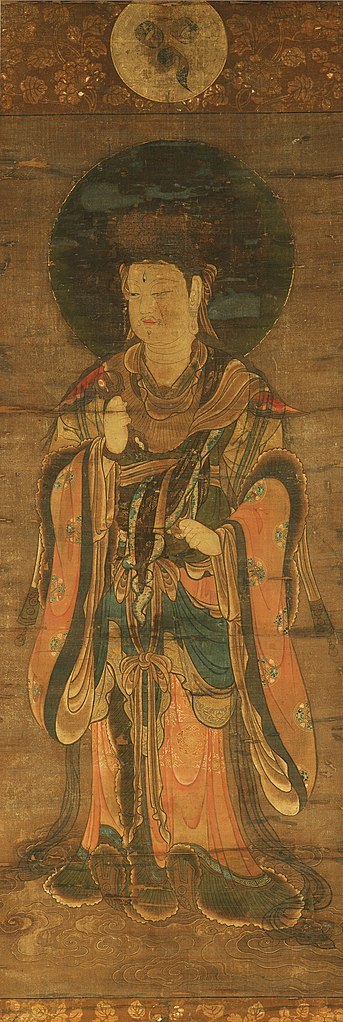
A conventional depiction of Taishakuten (wikimedia commons)
For the average Japanese person through much of the country’s history, the most frequent exposure to Taishakuten were standardized oath formulas (kishōmon). These followed a strict hierarchy of deities: Taishakuten, Bonten (Brahma) and the four heavenly kings first, then king Enma, Godo Daishin (Wudao Dashen), Taizan Fukun and other underworld officials (sometimes assisted by astral figures), then kami and representations of Buddhas tied to specific localities (for example the great Buddha of Tōdai-ji), and sometimes various religiously significant historical figures like prince Shotoku or Buddhist patriarchs. Obviously, Taishakuten’s elevated position reflects his role as a heavenly ruler - the “heavenly emperor”, tentei (天帝).
The residence of Taishakuten is the heaven of the thirty three devas (忉利天, Tōriten, a calque from Sanskrit Trāyastriṃśa). It is located on Mount Sumeru, the center of the world according to Buddhist cosmology. Sources from the Heian period indicate the existence of a belief Taishakuten’s heaven is unique in that women could be reborn in it after death without first reincarnating as men. This distinction was otherwise only attributed to the pure land of Maitreya. Note it was not Taishakuten himself who was responsible for guaranteeing that, though, but rather the bodhisattva Fugen, who was particularly popular among Heian court ladies.
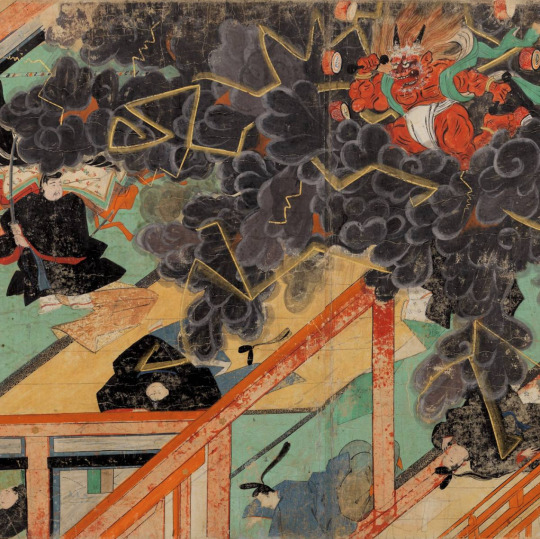
Karai Tenjin (wikimedia commons)
Taishakuiten’s major position in the Buddhist-influenced cosmos is also evident in literary compositions focused on other deities. For example, in the Dōken Shōnin Meidoki (道賢上人冥途記, “Record of Dōken Shōnin’s Experience of the Other World”), a version of the legend of Michizane, his revenge is supported by Taishakuten, who gives him a new name, Nihon Dajō Itoku Ten (日本太政威徳天). This is meant to show his banishment was a religious transgression, and we also learn that the emperor responsible for it, Daigo, fell into hell as a result. However, esoteric Buddhism is also credited with calming Michizane down - as he explains himself, “bodhisattvas (...) were there, and they enthusiastically propagated the esoteric teachings. Because I liked these teachings very much, one-tenth of my deeply seated enmity from my past was reduced.”
This obviously goes against the more common legend where being enshrined pacifies Michizabe entirely. In the Dōken version he announces that the enshrined deity, who he calls Karai Taiki Dokuō (火雷大気毒王; “King of Fire-Thunder and Poisonous Air”), is merely his messenger #3 (#1 and #2 are not mentioned).
The closest thing I can think of to Taishakuten being associated with the weather in Japanese sources occurs in a version of the Michizane legend, too: in another variant, Michizane states it was Taishakuten alone who permitted him to enact his vengeance and entrusted him with commanding 105000 thunder gods (in the Dōken Shōnin Meidoki there are 168000 attendants instead, “poisonous dragons, evil demons, deities of water and fire, thunder and lightning, the director of the wind, the master of the rain, and other poisonous, harmful, and evil deities”) and causing disasters.
From emperor to heaven to controller of fate
Due to his prominent cosmological role Taishakuten is also described in many sources as a controller of fate responsible for determining the lifespans of living beings. Sometimes, in this capacity he basically overlaps with king Enma - for example, Shishi Yaloan, a Buddhist encyclopedia from the eleventh century, states that he also possesses a mirror in which he can check on his subjects. A local tradition from Tateyama states that he lives on the Taishaku Peak of Mt. Tate, simultaneously regarded as an entrance to Buddhist hell. However, while Enma and the other kings of hell generally stay there, Taishakuten takes a more proactive role, seeking information about the good and bad deeds of the living. Initially, it was believed that a survey of the whole world was conducted on his behalf by the four heavenly kings, but by the tenth century, a belief that he performs it himself every four months himself developed.

The famously unconventional depiction of Taishakuten from Shibamata Taishakuten, still distributed today in the form of ofuda (wikimedia commons)
In the Edo period, Taishakuten as a controller of fate developed a connection with deities associated with the tradition of kōshin nights. In this context he became the deity the three worms living in every person’s body report their good and bad deeds to. Temples associated with him, like Shibamata Taishakuten (famous among other things for its unconventional images of the eponymous deity), were historically a popular destination for pilgrimages tied to kōshin celebrations.
While the fate connection ultimately came to the forefront in Japan, it would be unfair to say it entirely superseded the original heavenly role. As a matter of fact, it was the fact that Taishakuten was a “heavenly emperor” (tentei) that made him such a good fit for kōshin.
The elusive "emissary of Taishaku"
As early as in the Muromachi period, yet another deity came to be viewed as responsible for Taishakuten's survey of the world in a variant tradition: one of the so-called “ambulatory deities” (遊行神, yugyōjin; “ambulatory” as in “wandering”, not in the medical sense) , Ten’ichi(jin) (天一神; also read Nakagami), literally “the first deity of heaven”. He was regarded as a “vassal” of Taishakuten and the commander of the Twelve Heavenly Generals. Each of his cyclical surveys of the world lasted 44 days (four times five days for each of the main directions and then four times six for the intermediate ones). That was followed by sixteen days during which he reported the vices and virtues he recorded to Taishakuten in heaven, with his own underling Nichiyū(jin) (日遊神; “playing sun deity”) descending to earth instead.
During Tenichi’s absence, which started with a day referred to as Ten’ichi tenjō (天一天上), directional taboos pertaining to various astral deities, which normally had to be countered with a practice known as “changing directions” (方違え, katatagae), did not apply.
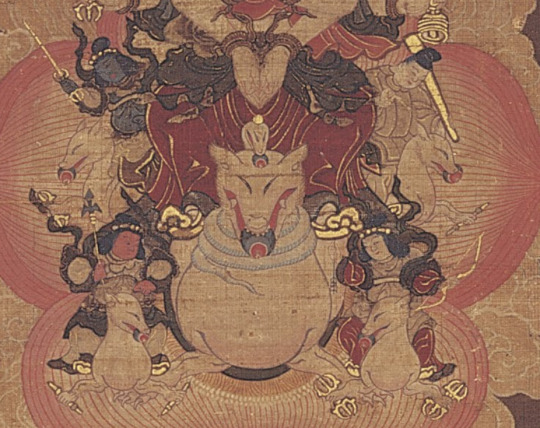
Taishaku Shisha (top right) and his peers accompanying Dakiniten (wikimedia commons)
Another interesting thing about Ten’ichi is that he was identified with an elusive deity known simply as Taishaku Shisha (帝釈使者), literally “emissary of Taishaku”. At first glance this doesn’t really sound interesting - after all, Taishaku Shisha’s name sounds exactly like what Ten’ichi does - but completely unexpectedly, the former actually belongs to the entourage of Dakiniten. His attributes make him resemble officials of the underworld, though he is never portrayed as menacing, always as benign, and his duty is to report the good and bad deeds to his superiors, much like Ten’ichi does. He additionally functions as a god of wisdom, which according to Bernard Faure might reflect Dakiniten’s link to the bodhisattva Monju, famous due to an association with this concept.
Curiously, while Taishaku Shisha is at least nominally a member of a group of four “acolytes” of Dakiniten alongside Tennyoshi (天女子; “heavenly maiden”; holds a bow), Shakunyoshi (赤女子; “red maiden”; holds a halberd and a “seduction jewel”, aikei-gyoku, 愛敬玉) and Kokunyoshi (黒女子; “black maiden”; holds a sword and a black jewel), he is sometimes described as de facto separate from them. Perhaps the fact his very name links him with another deity has something to do with that. Also, he is absent from the origin myth of the three maidens, who according to Hoki Naiden flew to Japan from India. According to Bernard Faure, it is possible his roles overlapped in part with Dakiniten’s own emissaries, the tengu Tonyūgyō (頓遊行; brings happiness) and Suyochisō (須臾馳走; brings longevity).
Dakiniten, “demon kings” and Amaterasu: the network of Taishakuten
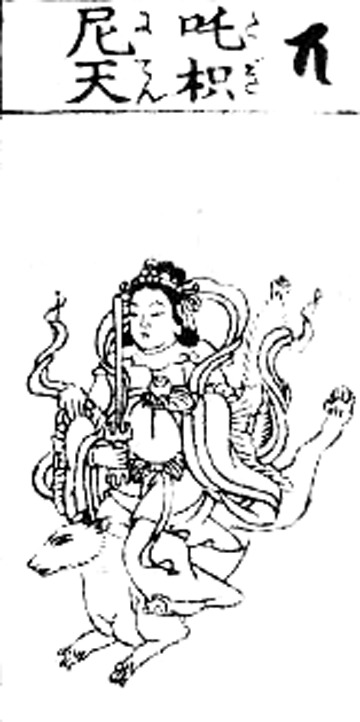
Dakiniten (wikimedia commons)
Taishakuten’s connection with Dakiniten goes beyond the figure of Taishaku Shisa. The Mizōukyo (未曽有經) contains a myth according to which a fox once tricked Indra into accepting the animal as his master is recorded. It serves as an explanation for the notably fox-like Dakiniten’s elevated role in the royal ascension rite devised by Shingon priests (it was still performed in the 19th century, emperor Meiji was the first to abstain from it). In folk beliefs Taishakuten was also sometimes assigned the role of the “master of the foxes”, which normally belonged to her instead.
The link to these animals according to Bernard Faure might have reflected a more ambivalent perception of Taishakuten than usually expected. The other possible piece of evidence in favor of this interpretation is a poem which proclaims that he and Tsuno Daishi, the demonic manifestation of Ryōgen, look “like brothers”. The latter is a complex figure, but it will suffice to say here that historically he was sometimes perceived as a “demon king” (魔王, maō). On the other hand, the original holder of this title, the “Demon King of the Sixth Heaven” (in other words, Mara) was said to offer his blood to Taishakuten on “blood-shunning days” (地幅, chi-imbi). In practical terms, this meant a religious prohibition on the drawing of blood, acupuncture and moxibustion on a specific day, different each month.
I need to stress here that even though figures such as Dakiniten and the “demon kings” obviously originated in the realm of demonology - respectively as a flesh-eating, vital essence-stealing demon and as the tempter of the Buddha - they eventually developed much more complex and nuanced characters. Therefore, it is not unexpected major deities appear in association with them. In the middle ages, even Amaterasu was frequently linked with them.
Funnily enough, in contrast with Susanoo Amaterasu does have a connection to Taishakuten as well. Tenshō Daijin Kuketsu (天照大神口決; “Oral Transmission.Pertaining to the Great Goddess Amaterasu”) from 1328 states that she corresponds to him - but also to Bonten, Shōten (Ganesha), the kushōjin (倶生神; these would take a bit to explain), king Enma and Godō Daijin. Granted, another roughly contemporary treatise, Reikiki, instead proclaims Taishakuten, the “heavenly emperor” (tentei; just like in the later kōshin tradition) the “kami-body” of Toyouke, the outer shrine Ise deity. However, these matters ultimately go beyond the scope of this response. Stay tuned for my article about medieval Amaterasu to find out more!
Bibliography
Ryūichi Abe, Women and the “Heike Nōkyō”: the Dragon Princess, the Jewel and the Buddha
Bernard Faure, The Fluid Pantheon (Gods of Medieval Japan vol. 1)
Idem, Protectors and Predators (Gods of Medieval Japan vol. 2)
Idem, Rage and Ravage (Gods of Medieval Japan vol. 3)
Gerald Gromer, A Year in Seventeenth-Century Kyoto. Edo-Period Writings on Annual Ceremonies, Festivals, and Customs
Takuya Hino, The Daoist Facet of Kinpusen and Sugawara no Michizane Worship in the Dōken Shōnin Meidoki: A Translation of the Dōken Shōnin Meidoki
Nobumi Iyanaga, Medieval Shintō as a Form of 'Japanese Hinduism': An Attempt at Understanding Early Medieval Shintō
William Lindsey, Religion and the Good Life: Motivation, Myth, and Metaphor in a Tokugawa Female Lifestyle Guide
Fabio Rambelli, Before the First Buddha: Medieval Japanese Cosmogony and the Quest for the Primeval Kami
Hiroo Satō, Wrathful Deities and Saving Deities in: Fabio Rambelli and Mark Teeuwen (eds.), Buddhas and Kami in Japan. Honji Suijaku as a Combinatory Paradigm
Idem, The Emergence of Shinkoku (Land of the Gods) Ideology in Japan in: Henk Blezer and Mark Teeuwen (eds.), Challenging Paradigms. Buddhism and Nativism: Framing Identity Discourse in Buddhist Environments
David Weiss, The God Susanoo and Korea in Japan’s Cultural Memory: Ancient Myths and Modern Empire.
81 notes
·
View notes
Text
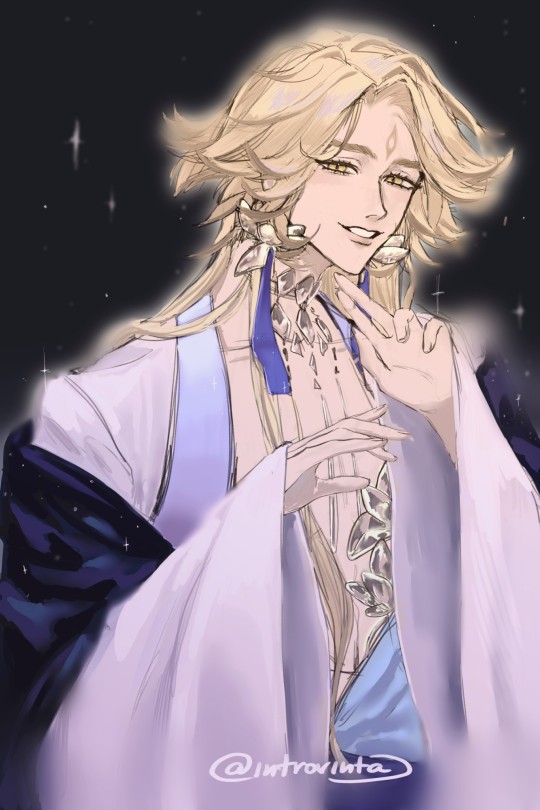
✨🫢
#украрт#ukrart#artists on tumblr#digital art#doodle#fanart#taishakuten fanart#taishakuten#onmyoji fanart#onmyoji#onmyoji character#art#sketch
67 notes
·
View notes
Text
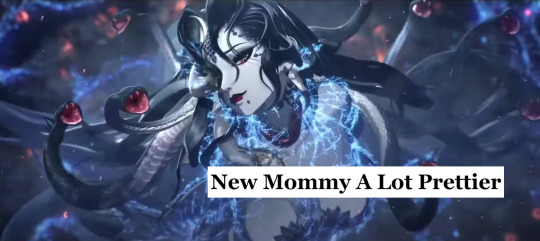






Onmyoji as The Onion headlines part 5
Part 1/2/3/4
90 notes
·
View notes
Text



entwined
full image
support me on pixiv fanbox
melontoyo.fanbox.cc
#onmyoji#onmyoji rpg#onmyoji game#asutai#asura#taishakuten#onmyoji taishakuten#onmyoji asura#do not behold at work#colored some old sketches as a lil treat for getting lots of important work done.....#also unevo Asura is so hard to draw... idk how to draw his face. tried to fix it but then just gave up lol#anyway pls enjoy some food 👨🍳🥘#melontoyo's art
245 notes
·
View notes
Text
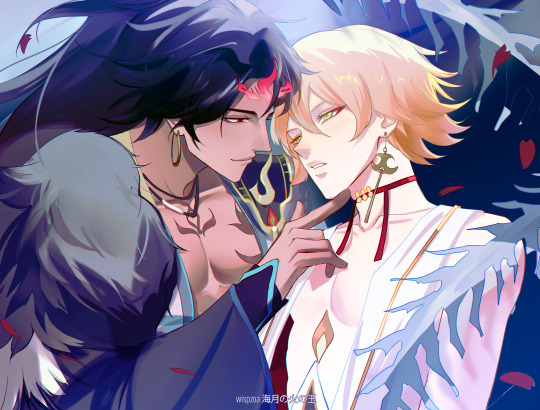
love the new Asura skin
40 notes
·
View notes
Text
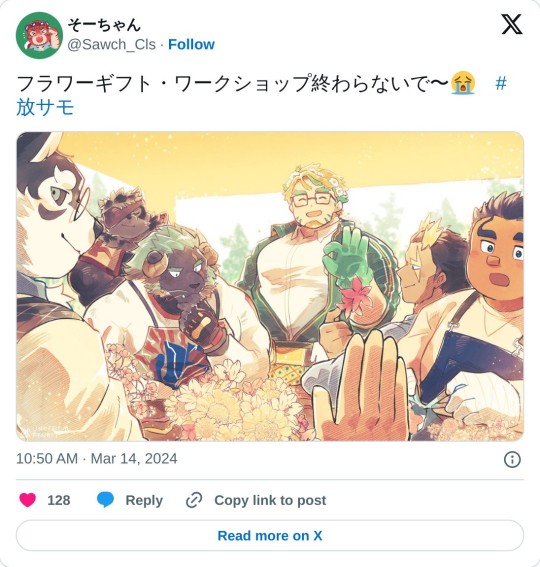
#Masanori#Krampus#Taishakuten#Takeminakata#Hippolytus#Gurl even Sawch sees Volkh part of the main cast proves he should have gotten the alt#Volkh Vseslav
38 notes
·
View notes
Text

taishakuten wip
64 notes
·
View notes
Text
I can't be the only one who thinks that Taisha and Yaoshi look similar


202 notes
·
View notes
